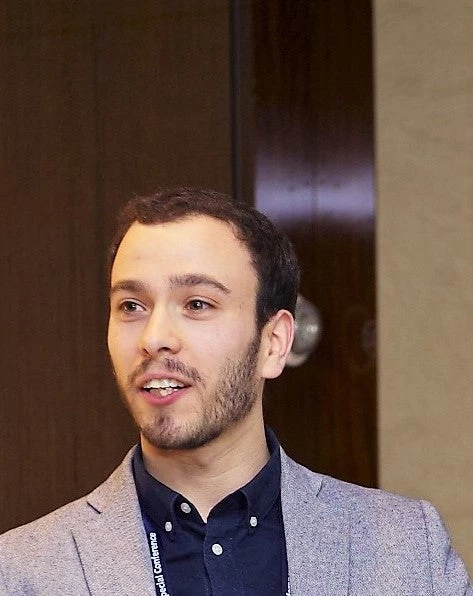Note: A more recently updated version of the numbers and chart below is available here.
More than a year into the pandemic, there is still much we don’t know concerning its impact on global poverty. Though high-frequency phone surveys have helped gain a broad understanding of the economic consequences of the pandemic, the collection of detailed, household surveys needed to understand its impact on poverty has largely been put on hold. While awaiting household surveys, we continue our previous approach of trying to understand the poverty consequences of the pandemic by extrapolating the income and consumption from past household surveys using national accounts growth forecasts. Simple as it is, this method generally outperforms more complicated methods in nowcasting poverty.
During 2020, as the pandemic spread around the globe and growth forecasts deteriorated, we gradually increased our estimate of the impact of the pandemic on global poverty. To recall, COVID-19-induced poverty is calculated as the difference in poverty in a world with and without the pandemic. The pandemic-induced poverty estimates were derived using the latest growth forecasts available from the Global Economic Prospect (GEP), and the pre-pandemic counterfactual was derived using the forecasts from the January 2020 GEP. In January 2021, we estimated that the pandemic will push between 119 and 124 million people into extreme poverty around the globe in 2020.
In this blog, we revise those numbers based on updates to global poverty data that occurred in March and June and based on the recently launched growth forecasts from the June 2021 version of GEP. We aim to provide preliminary answers to two questions: Is global poverty turning the corner on the pandemic in 2021, and if so, is this happening in a similar way across countries?
We find that the pandemic led to 97 million more people being in poverty in 2020. This is a reduction of about 20 million from our last estimate (see this figure for a picture of how our estimates have changed over the course of the pandemic). Even this reduced estimate represents a historically unprecedented increase in global poverty.
Figure 1: Extreme poverty, 2015-2021
In 2021, we project global poverty to decrease by about 21 million people compared with 2020. This represents exactly the same decline we had expected would occur in 2021 before the pandemic hit. The implications of this estimate are that global poverty is projected to decline, and the pace of reduction is returning to the pre-pandemic trend. In that sense, one could say that global poverty may be turning the corner on the pandemic in 2021. Still, this does not mean that we are getting back to the level of poverty we had anticipated in 2021 before the pandemic spread. In fact, because the pace of reduction is similar to what we expected before the pandemic spread, the recovery taking place will not be sufficient to close the gap the pandemic is estimated to have caused in 2020. Globally, the increase in poverty that occurred in 2020 due to COVID still lingers, and the COVID-induced poor in 2021 continues to be 97 million people. If global poverty continues to reduce at the pace we expected before the pandemic, every year there will be tens of millions of people living in poverty because of the initial fallout from the pandemic.
This pattern, of returning to the pre-COVID pace of poverty reduction, becomes clearer when looking at the relative changes in poverty, presented in Figure 2. We project a decrease in extreme poverty of 2.9% from 2020 to 2021, which is nearly identical to the annual declines in poverty observed before the pandemic spread (2.3%-3.7%) and to the decline in poverty we had expected to occur in 2021 before the pandemic spread (3.3%).
Figure 2: Annual change in the number of global extreme poor (%)
Why is global poverty projected to decrease in 2021? Or, put differently, why is growth expected to recover in the countries where the poor live? In January we projected that global poverty would at best stagnate in 2021 and that the COVID-induced poor could rise to around 150 million people. This year we have witnessed some of the worst waves of the pandemic in low- and middle-income countries, such as the millions of recorded cases in India in April and May. Would these developments not suggest that our January estimates were too optimistic, and that poverty is bound to increase further in 2021? Though we can only speculate on the reasons why global poverty may decrease in 2021, here are some possible explanations.
When the pandemic broke out, many developing countries responded in ways similar to high-income countries; by locking down major parts of their economy. These lockdowns decreased incomes and employment, causing an increase in extreme poverty. In 2021, the appetite for lockdowns has been smaller. This may have limited the economic consequences at the cost of increased COVID cases and COVID-related deaths. This pattern is reflected in the OxCGRT stringency index, which captures countries’ response to the pandemic including school and work closure, travel bans, partial or full lockdowns. In May 2020, on average 25 out of 27 low-income countries in OxCGRT had a stringency index value higher than 50, whereas in May 2021, on average 10 low-income countries crossed that threshold. In addition, the pandemic is receding in many high-income countries, and economic activity is once again on the rise. This could lower poverty in low- and middle-income countries if the rise in economic activity spurs demand for their products and commodities.
All this said, the uncertainty surrounding the 2021 estimates is enormous. For one, 2021 is still ongoing, and the prospects of new COVID waves in low- and middle-income countries, further delays in vaccination rollouts, new variants of the virus, increasing debt levels, and rising food prices could all significantly worsen the outlook. As the global poverty trends are particularly sensitive to the developments in a handful of countries, any developments in those countries can have significant bearings on the global picture. Aside from these possible future developments, our method to nowcast global poverty carries a lot of uncertainty, in particular with regards to its omission of impacts on inequality.
Whereas current estimates suggest a global rebound in 2021, the rebound will not be equal for all. Figure 3 shows the expected change in poverty according to the World Bank’s income classification and geographical regions for 2021 – essentially breaking down the 2021 bars from Figure 2. Looking at the blue bars reveals that the declines in poverty are predicted to occur in high- and middle-income countries (HIC, UMIC, LMIC), particularly countries in South Asia (SAR) and East Asia & Pacific (EAP). In contrast, low-income countries (LIC) and countries in Sub-Saharan Africa (SSA) are expected to see further increases in poverty in 2021. This suggests that some of the poorest and most fragile regions may not be turning the corner on COVID after all.
Figure 3: Percent change in the projected number of poor from 2020 to 2021, by income group and region
This picture is reinforced when we compare how the change in poverty in 2021 measures up with the change we expected before the pandemic spread – that is, comparing the grey and blue bars in Figure 3. Europe and Central Asia (ECA), EAP, and SAR are projected to fare as well as before the pandemic. In that sense, they are returning to pre-pandemic changes in poverty, though at higher levels of poverty. But for the world’s poorest and richest economies, the picture looks different. HICs and UMICs are outperforming the pre-pandemic changes in poverty we expected. Not only is poverty falling in those countries, but the gap to the poverty rates expected before COVID is narrowing. In SSA and LICs the picture is the opposite: Poverty is increasing, and it is doing so at a faster pace than we expected before the pandemic. For LICs, poverty is set to increase in 2021 by 2.7% compared to the pre-pandemic projection of a 0.2% increase. For SSA, poverty was already projected to increase in 2021 before the pandemic, but the rate of increase in poverty is projected to more than double (from 1.0% to 2.5%). Hence, in the poorest countries of the world, the impact of COVID-19 on poverty is not only still present, but it is worsening.
We gratefully acknowledge financial support from the UK government through the Data and Evidence for Tackling Extreme Poverty (DEEP) Research Programme.






Join the Conversation